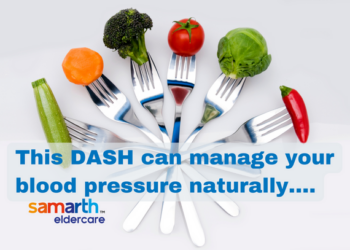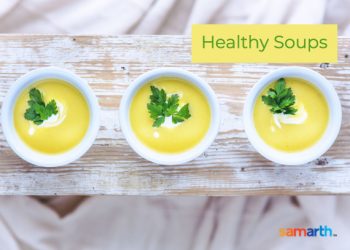The humble Palak, which is very common in most Indian households, is a highly beneficial health food. You may be aware of Popeye the Sailor, the muscular American cartoon sailor man, who was getting his strength from eating spinach. Perhaps, there is some sense to our grannies insisting on Palak in our daily diets and why Popeye was so strong! Most greens are considered good for health and are rich in Vitamins or minerals, especially Iron. Here is a rundown on what you gain by eating Palak.
Protection from Iron deficiency
Palak is indeed a great source of Iron, especially when cooked, and that too with fewer calories and is fat-free. This is why it is extremely healthy, as compared to many other foods that can provide you Iron. Iron deficiency can be debilitating and is often undiagnosed in the aging population. This happens, since the symptoms like fatigue, weakness, low blood pressure, etc. may be linked to other common old age issues. Hence, it is important to include Palak in the diet, and also go for regular checkups, including the red blood cell count.

Join Now >
Relieves Constipation
Palak contains both soluble as well as insoluble fiber that can help relieve and protect from constipation, a big issue that seniors face. It adds bulk to the stool and thus makes for a smooth passage through the gut, easing constipation. Besides, this fiber also helps with heart health and protects many other organs as well. Since the fiber helps remove the toxins from the body, it is also said to protect against colon cancer.
Improves vision
Research suggests that people who eat Lutein, Beta-carotene, and Zeaxanthin will have a lower risk of developing cataracts. Spinach is fully loaded with all these potent antioxidants, and this can help you keep cataract at bay. Also, these antioxidants are believed to filter the UV rays that damage the eyes and skin through free radicals. Above all, they also cut the risk of macular degeneration (AMD), which is another issue caused due to age. It is also said to help reduce the irritation and puffiness of the eyes.
Power of antioxidants
Antioxidants help us fight even deadly diseases like cancer, as they have anti-inflammatory capabilities. Inflammation caused in the cells is responsible for many diseases, including cancer. Spinach or Palak is called an antioxidant superfood because of the presence of Lutein, which is related to Vitamin A and Beta-carotene. Antioxidants also help in strengthening all muscles, especially the heart muscles.
Diabetic-friendly
Palak is called a diabetic superfood as well, as it helps manage the blood sugar levels in the body. The high fiber content in it makes it not so easy to digest, and hence it doesn’t spike the sugar levels. It has no starch, which is an enemy of diabetics and hence can be eaten even in larger portions. It is one of the low glycemic index foods that are recommended for people with diabetes. It is also very low in carbohydrate content, making it another safe food for people with diabetes. Being low on calories is another point in its favor, as it helps people with diabetes to maintain their weight.
Builds immunity
It is abundant in Vitamins and minerals that help boost our immune system. High doses of Vitamin A, C as well as E, present in Palak, help our body fight many infections, and also helps it replenish the blood cells. The replenishment is done because of folate or Vitamin B9 present in it.
Good for bones
Weakening or degenerating bones that easily crack and cause fracture is another common issue for seniors. The Calcium present in Palak can stave off osteoporosis and help keep your bones strong. Vitamin K presence helps build bone density, as well.
Brain health
Vitamin B6 and Potassium contained in Palak helps in maintaining a healthy nervous system. The Potassium helps with brain health and maintaining healthy blood flow to that part, thus improving the cognitive functions and memory.
How to consume?
One of the easiest and best ways to consume Palak is to prepare a soup out of it. This can be made a bit more interesting by adding some pepper and ginger and can be had hot, in any season. However, in India, we have a host of recipes from across the country, that can be used to prepare a variety of dishes using it. It can be had with rotis or rice and is also easy to cook and eat.











